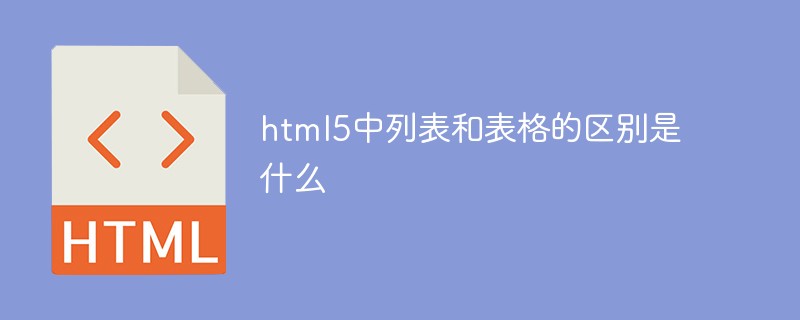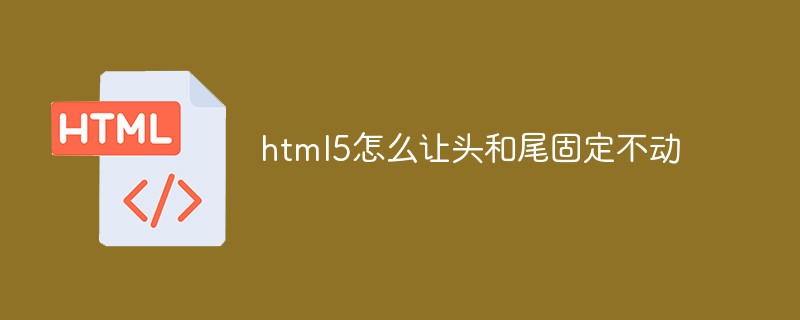Overview
Canvas in HTML5 does not directly provide a method for drawing ellipses. The following is a summary of several drawing methods. Each method has its own advantages and disadvantages, which should be selected according to the situation. The parameters of each method are the same:
1.context is the 2D drawing environment object of Canvas,
2.x is the abscissa of the ellipse center,
3.y is the ordinate of the ellipse center,
4.a is the length of the transverse semi-axis of the ellipse ,
5.b is the length of the longitudinal semi-axis of the ellipse.
Parametric equation method
This method uses the parametric equation of the ellipse to draw the ellipse
//----------Use parametric equations to draw ellipses---------------------
//Function Parameters x and y are the center of the ellipse; a and b are the horizontal and vertical semi-axes of the ellipse respectively.
//The length of the vertical semi-axis cannot be 0 at the same time.
//The disadvantage of this method is that when lineWidth is wider, the ellipse will be smaller. When flat
//The long axis end inside the ellipse is sharper, not smooth, and less efficient
function ParamEllipse(context, x, y, a, b)
{
//max is equal to 1 Divide by the larger of the major axis values a and b
//i increases by 1/max each cycle, indicating an increase in degree
//This can make the path (arc) drawn in each cycle Close to 1 pixel
var step = (a > b) ? 1 / a : 1 / b;
context.beginPath();
context.moveTo(x a, y); //From the ellipse Start drawing from the left endpoint
for (var i = 0; i {
//The parametric equation is x = a * cos(i), y = b * sin(i),
//The parameter is i, indicating the degree (radians)
context.lineTo(x a * Math.cos(i), y b * Math.sin(i));
}
context.closePath();
context.stroke();
};
Uniform compression method
This method uses the principle of uniform compression in mathematics to uniformly compress a circle into an ellipse. Theoretically, a standard ellipse can be obtained. The following code will cause inconsistent line widths. For the solution, see Simonleung's comment on the 5th floor. .
//------------Uniform compression method for drawing ellipses--------------------
//The method The arc method is used to draw a circle, combined with scale for
//Scale in the horizontal or vertical axis direction (uniform compression)
//The edge of the ellipse drawn by this method is thicker as it is closer to the end of the long axis, and the longer axis The line width of the endpoint is the normal value
//The closer the edge is to the minor axis, the flatter and thinner the ellipse will be, and even discontinuity will occur. This is the result of scale
//This shortcoming is sometimes an advantage, such as When expressing the three-dimensional effect of the ring (planetary halo)
//For the case where the parameter a or b is 0, this method is not applicable
function EvenCompEllipse(context, x, y, a, b)
{
context.save();
//Select the larger of a and b as the radius parameter of the arc method
var r = (a > b) ? a : b;
var ratioX = a / r; //Horizontal axis scaling ratio
var ratioY = b / r; //Vertical axis scaling ratio
context.scale(ratioX, ratioY); //Scale (uniform compression)
context.beginPath();
//Draw counterclockwise from the left endpoint of the ellipse
context.moveTo((x a) / ratioX, y / ratioY);
context.arc(x / ratioX , y / ratioY, r, 0, 2 * Math.PI);
context.closePath();
context.stroke();
context.restore();
};
Cubic Bezier Curve Method 1
Drawing an ellipse with a cubic Bezier curve is an approximation in actual drawing, and it is also an approximation in theory. But because of its high efficiency, it is often used to draw ellipses in computer vector graphics, but I am not very clear about the specific theory. The degree of approximation lies in the selection of the positions of the two control points. The control point positions of this method were obtained by my own experiments, and the accuracy is okay.
//---------Use cubic Bezier curve to simulate ellipse 1------------------------
//This method will also produce the phenomenon that when the lineWidth is wider and the ellipse is flatter,
//the long axis end is sharper and not smooth
function BezierEllipse1(context, x, y, a, b)
{
//The key is the setting of the two control points in bezierCurveTo
//0.5 and 0.6 are the two key coefficients (obtained from experiments in this function)
var ox = 0.5 * a,
oy = 0.6 * b;
context.save();
context.translate(x, y);
context.beginPath();
//Draw counterclockwise starting from the lower end of the vertical axis of the ellipse
context .moveTo(0, b);
context.bezierCurveTo(ox, b, a, oy, a, 0);
context.bezierCurveTo(a, -oy, ox, -b, 0, -b) ;
context.bezierCurveTo(-ox, -b, -a, -oy, -a, 0);
context.bezierCurveTo(-a, oy, -ox, b, 0, b);
context.closePath();
context.stroke();
context.restore();
};
Cubic Bezier Curve Method 2
This method was changed from a reply to a post in StackOverFlow. It has higher accuracy and is also a method commonly used to draw ellipses.
//---------Use cubic Bezier curve to simulate ellipse 2------- ----------------
//This method will also produce the phenomenon that when the lineWidth is wider and the ellipse is flatter
//, the long axis end is sharper and not smooth
//This method is more accurate than the previous Bezier method, but slightly less efficient
function BezierEllipse2(ctx, x, y, a, b)
{
var k = .5522848 ,
ox = a * k, // Horizontal control point offset
oy = b * k; // Vertical control point offset
ctx.beginPath();
//Draw four cubic Bezier curves clockwise starting from the left endpoint of the ellipse
ctx.moveTo(x - a, y);
ctx.bezierCurveTo (x - a, y - oy, x - ox, y - b, x, y - b);
ctx.bezierCurveTo(x ox, y - b, x a, y - oy, x a, y);
ctx.bezierCurveTo(x a, y oy, x ox, y b, x, y b);
ctx.bezierCurveTo(x - ox, y b, x - a, y oy, x - a, y);
ctx.closePath();
ctx.stroke();
};
Raster method
This method can use basic algorithms in graphics to draw ellipses based on the characteristics of Canvas that can operate pixels. For example, the midpoint ellipse drawing algorithm, etc.
One example is a blog post by garden friend "Doudou Gou" "HTML5 Canvas Improvement Class (1) - Raster Graphics (1) Midpoint Circle Drawing Algorithm". This method is relatively "original", has great flexibility, high efficiency, and high accuracy, but it is relatively complicated to implement a valuable function for drawing ellipses. For example, when the line width changes, the algorithm is more complicated. Although it is an algorithm for drawing circles, the algorithm for drawing ellipses is similar to it. You can refer to it below.
Summary
Basically all methods cannot achieve 100% accuracy because they are limited by the display resolution.
In fact, the best method should be arc() scale(). The canvas drawing library KineticJS uses this method.
In other drawing software, there is no inherent arc() scale() method like HTML5 canvas. Bezier curves are usually used to simulate approximate ellipses. No matter how many Bezier curves are, they are just approximations. Regarding using Bezier curves to simulate ellipses, you can refer to this information: Drawing an elliptical arc using polylines, quadratic or cubic Bezier curves.
Since arc() scale() is a method already implemented by the browser, it has the highest theoretical accuracy, so it is the best in terms of efficiency, accuracy and ease of use.
After drawing the ellipse with arc() scale(), the two methods context.stroke() and context.restore() are called in a different order, and the results will be very interesting. Usually you should restore() first and then stroke().
Demo
The following are several demonstrations of drawing elliptic functions in addition to the raster method. The demonstration code is as follows:
function execDraw()
{
//解决Chrome下的线宽小于等于1的问题
context.lineWidth = 1.1;
context.strokeStyle="black"
ParamEllipse(context, 130, 80, 50, 50); //圆
ParamEllipse(context, 130, 80, 100, 20); //椭圆
EvenCompEllipse(context, 130, 200, 50, 50); //圆
EvenCompEllipse(context, 130, 200, 100, 20); //椭圆
BezierEllipse1(context, 470, 80, 50, 50); //圆
BezierEllipse1(context, 470, 80, 100, 20); //椭圆
BezierEllipse2(context, 470, 200, 50, 50); //圆
BezierEllipse2(context, 470, 200, 100, 20); //椭圆
//检测相似性(重合的程度)
ParamEllipse(context, 300, 450, 250, 50);
context.strokeStyle = "yellow";
BezierEllipse1(context, 300, 450, 250, 50);
context.strokeStyle = "blue";
BezierEllipse2(context, 300, 450, 250, 50);
};
function clearCavnas()
{
context.clearRect(0, 0, 600, 600);
};
// ]]>
注意,要成功运行代码,需要支持HTML5的Canvas的浏览器。
 html5的div一行可以放两个吗Apr 25, 2022 pm 05:32 PM
html5的div一行可以放两个吗Apr 25, 2022 pm 05:32 PMhtml5的div元素默认一行不可以放两个。div是一个块级元素,一个元素会独占一行,两个div默认无法在同一行显示;但可以通过给div元素添加“display:inline;”样式,将其转为行内元素,就可以实现多个div在同一行显示了。
 html5中列表和表格的区别是什么Apr 28, 2022 pm 01:58 PM
html5中列表和表格的区别是什么Apr 28, 2022 pm 01:58 PMhtml5中列表和表格的区别:1、表格主要是用于显示数据的,而列表主要是用于给数据进行布局;2、表格是使用table标签配合tr、td、th等标签进行定义的,列表是利用li标签配合ol、ul等标签进行定义的。
 html5怎么让头和尾固定不动Apr 25, 2022 pm 02:30 PM
html5怎么让头和尾固定不动Apr 25, 2022 pm 02:30 PM固定方法:1、使用header标签定义文档头部内容,并添加“position:fixed;top:0;”样式让其固定不动;2、使用footer标签定义尾部内容,并添加“position: fixed;bottom: 0;”样式让其固定不动。
 HTML5中画布标签是什么May 18, 2022 pm 04:55 PM
HTML5中画布标签是什么May 18, 2022 pm 04:55 PMHTML5中画布标签是“<canvas>”。canvas标签用于图形的绘制,它只是一个矩形的图形容器,绘制图形必须通过脚本(通常是JavaScript)来完成;开发者可利用多种js方法来在canvas中绘制路径、盒、圆、字符以及添加图像等。
 html5中不支持的标签有哪些Mar 17, 2022 pm 05:43 PM
html5中不支持的标签有哪些Mar 17, 2022 pm 05:43 PMhtml5中不支持的标签有:1、acronym,用于定义首字母缩写,可用abbr替代;2、basefont,可利用css样式替代;3、applet,可用object替代;4、dir,定义目录列表,可用ul替代;5、big,定义大号文本等等。
 html5废弃了哪个列表标签Jun 01, 2022 pm 06:32 PM
html5废弃了哪个列表标签Jun 01, 2022 pm 06:32 PMhtml5废弃了dir列表标签。dir标签被用来定义目录列表,一般和li标签配合使用,在dir标签对中通过li标签来设置列表项,语法“<dir><li>列表项值</li>...</dir>”。HTML5已经不支持dir,可使用ul标签取代。
 Html5怎么取消td边框May 18, 2022 pm 06:57 PM
Html5怎么取消td边框May 18, 2022 pm 06:57 PM3种取消方法:1、给td元素添加“border:none”无边框样式即可,语法“td{border:none}”。2、给td元素添加“border:0”样式,语法“td{border:0;}”,将td边框的宽度设置为0即可。3、给td元素添加“border:transparent”样式,语法“td{border:transparent;}”,将td边框的颜色设置为透明即可。
 html5为什么只需要写doctypeJun 07, 2022 pm 05:15 PM
html5为什么只需要写doctypeJun 07, 2022 pm 05:15 PM因为html5不基于SGML(标准通用置标语言),不需要对DTD进行引用,但是需要doctype来规范浏览器的行为,也即按照正常的方式来运行,因此html5只需要写doctype即可。“!DOCTYPE”是一种标准通用标记语言的文档类型声明,用于告诉浏览器编写页面所用的标记的版本。


Hot AI Tools

Undresser.AI Undress
AI-powered app for creating realistic nude photos

AI Clothes Remover
Online AI tool for removing clothes from photos.

Undress AI Tool
Undress images for free

Clothoff.io
AI clothes remover

AI Hentai Generator
Generate AI Hentai for free.

Hot Article

Hot Tools

SublimeText3 Mac version
God-level code editing software (SublimeText3)

Dreamweaver Mac version
Visual web development tools

SublimeText3 Chinese version
Chinese version, very easy to use

VSCode Windows 64-bit Download
A free and powerful IDE editor launched by Microsoft

SublimeText3 Linux new version
SublimeText3 Linux latest version






